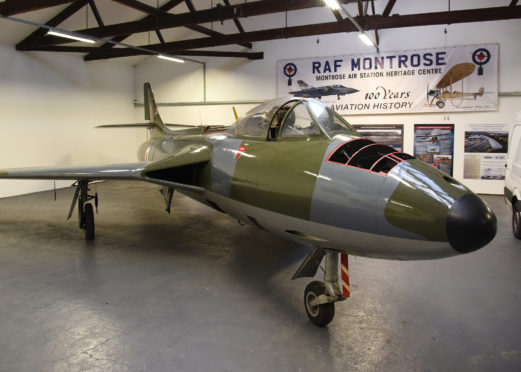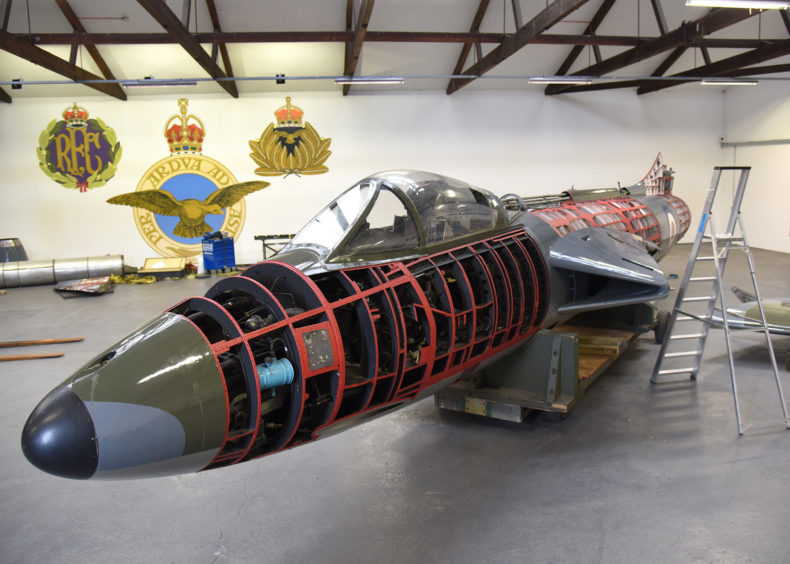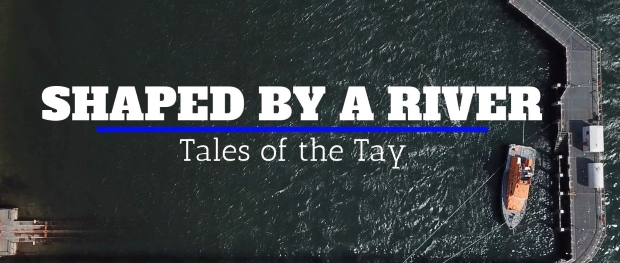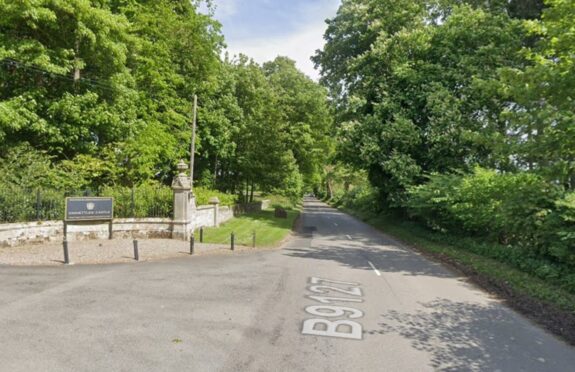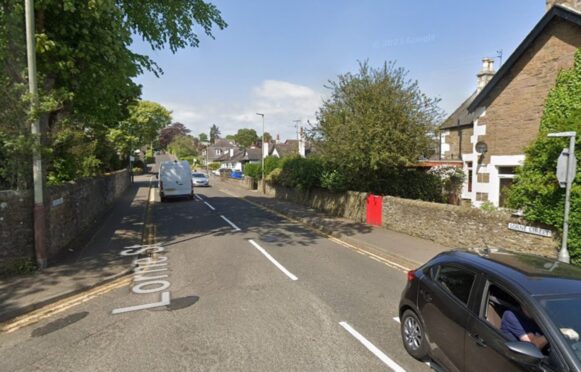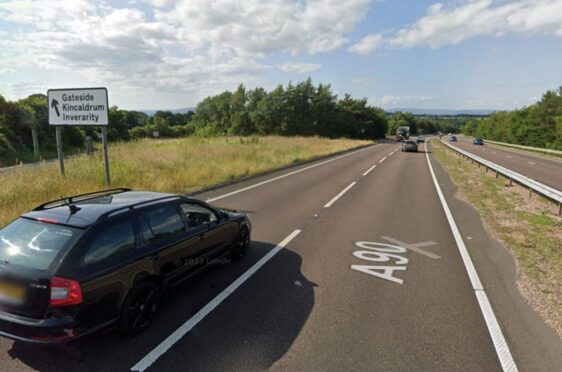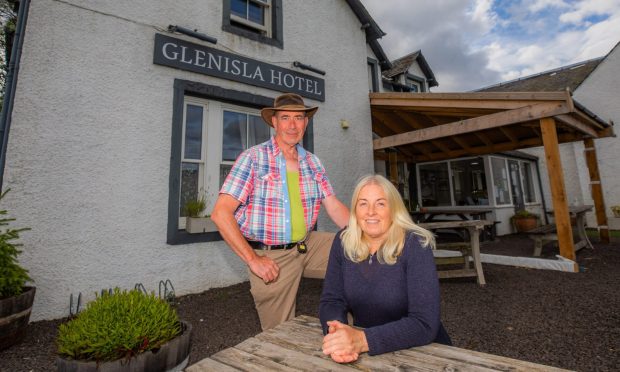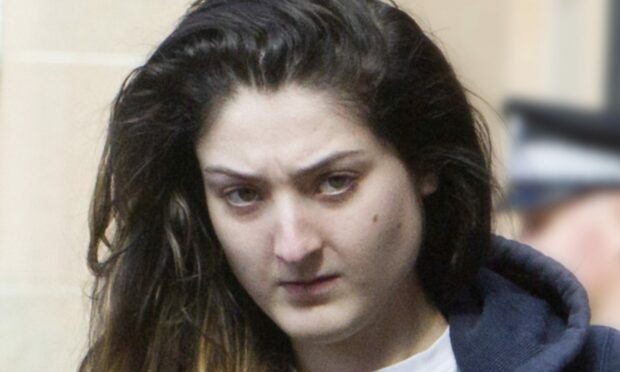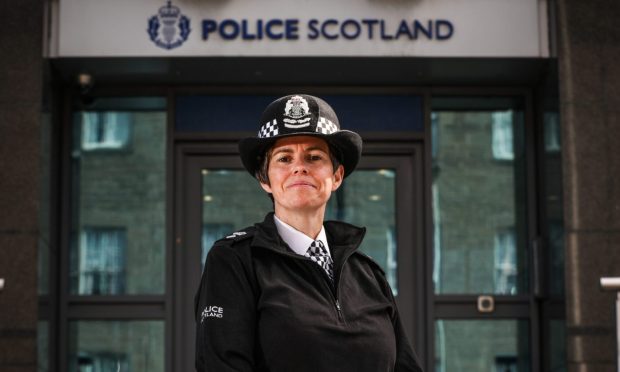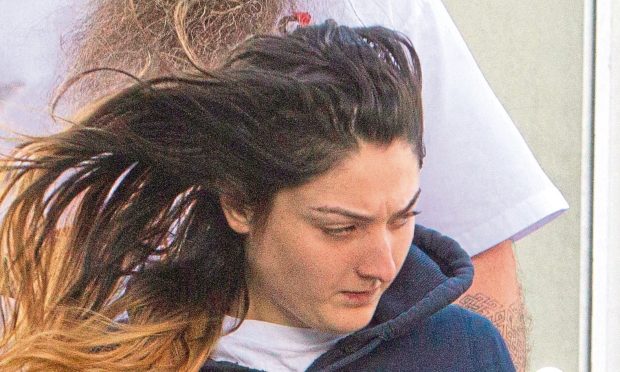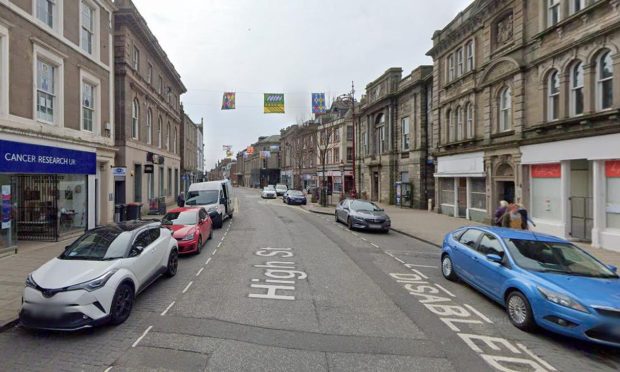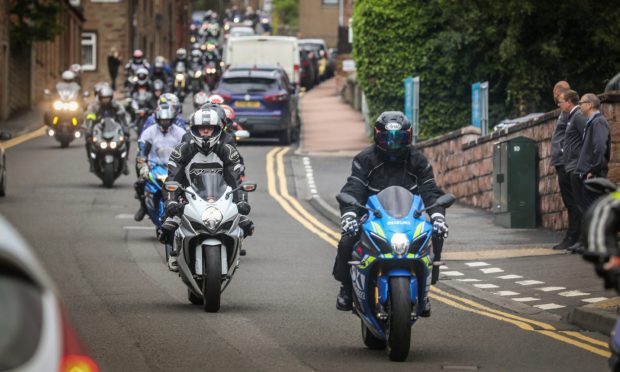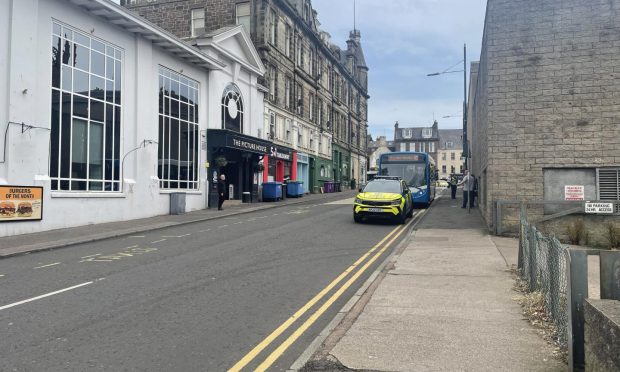A rare Hawker Hunter high-speed jet fighter has arrived in Montrose and is now on display.
One of the few surviving F1 models, the Hunter No.WT619 has been acquired from the RAF Museum after both parties strengthened their ties.
The Hunter was the first high-speed jet fighter with radar and fully-powered flying controls to go into widespread service with the Royal Air Force.
The aircraft has been re-assembled by a team from the RAF Museum.
There are plans for an official unveiling ceremony in due course.
MASHC chairman Stuart Archibald said the plane has links to RAF Leuchars in Fife.
“The aircraft already has a Scottish connection having been on the strength of No.43 Squadron whilst at RAF Leuchars in the 1950s.
“After service life it was on display at the Manchester Museum of Science and Industry for several years before being taken back by the RAF Museum and stored at RAF Stafford.
Follow our special series at www.thecourier.co.uk/tay
“On the aircraft’s port side, sections of the skin have been removed to give visitors an idea of the method of construction used in the building of a 1950s jet fighter.”
In February 1949, No.266 Squadron was renumbered to No.43 Squadron, flying Gloster Meteors from RAF Tangmere.
The squadron moved to RAF Leuchars in 1950.
In September 1953 the modified first prototype broke the world air speed record for aircraft with test pilot Neville Duke achieving a speed of 727.63mph.
The Hunter was very powerfully armed with 4x30mm Aden Cannons with 100 rounds each in a detachable gun pack which could be quickly lowered down to ground level to allow easy reloading of the guns.
In 1954 No.43 Squadron at RAF Leuchars began to receive the Hawker Hunter.
It was one of the most successful of the British post-war jet fighters and over 1,000 were purchased by the Royal Air Force.
Mr Archibald said: “The single-seat Hunter was introduced to service in 1954 as a manoeuvrable day interceptor aircraft, quickly succeeding first-generation jet fighters in RAF service such as the Gloster Meteor and the de Havilland Vampire.
“It was designed to take advantage of the newly developed Rolls-Royce Avon turbo-jet engine and swept wing development.”
In 1958 the Royal Air Force held a competition to find a suitable type to replace its Middle East-based Venom ground attack fighters.
Hawkers won with a proposal for a modified Hunter F6 and an order was placed for the conversion of a number of airframes.
The new version was designated FGA9 to show its new role and the first flew in July 1959.
FGA9s saw most of their service overseas.
The last operational Hunter FGA9s were flown by No.8 Squadron which disbanded in December 1971 although the type continued to be used in training units for a little longer.
Earlier this year MASHC signed a Memorandum of Understanding with the Royal Air Force Museum to establish a partnership to foster the interests of MASHC and the Royal Air Force Museum through collaborative programmes and other shared learning opportunities.
